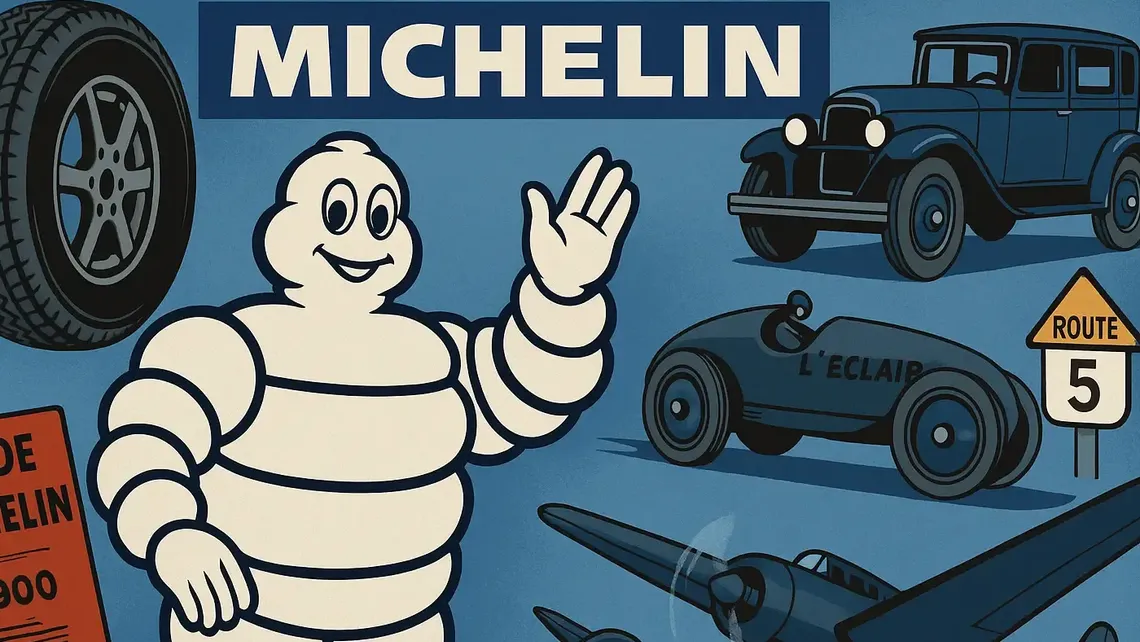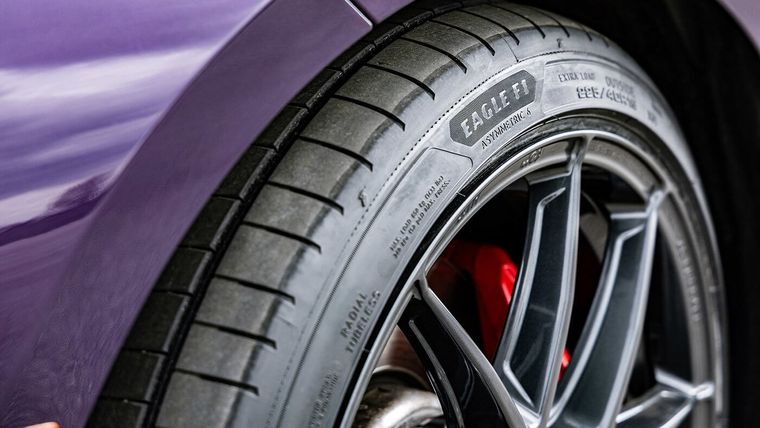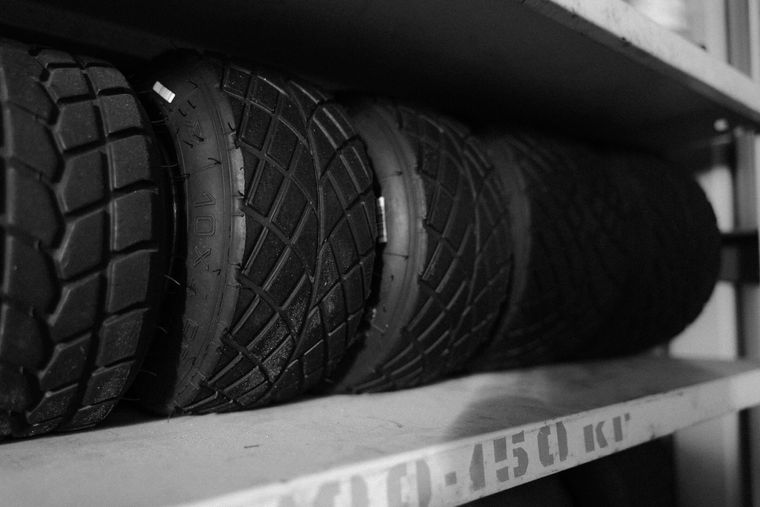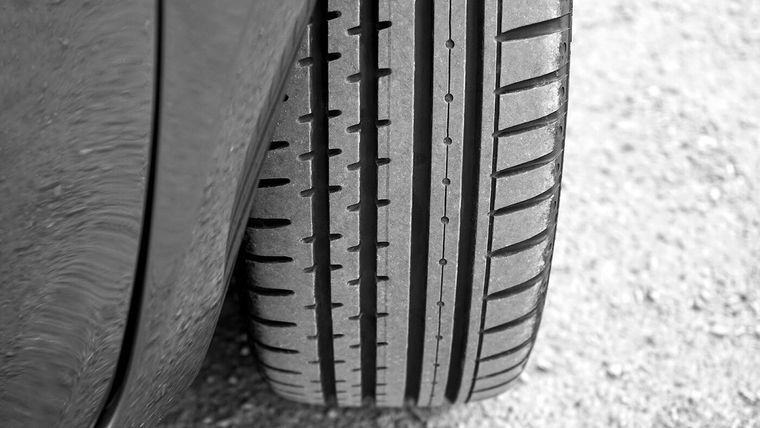Michelin: a tire manufacturer’s name that strongly resonates in the mind of every driver. And for good reason: the French tire maker is, for many, just as famous as car manufacturers themselves, thanks both to its long history and its countless innovations. However, many people wonder what justifies Michelin’s prices compared to other brands. Find out what set Michelin tires apart from the competition below with Blackcircles Canada—your online tire specialist across the country!
Michelin’s Story: Over 130 Years of Innovations Serving Mobility
Michelin’s story began in 1829 with Elisabeth Pugh-Barker, a Scottish woman married to Edouard Daubrée, an entrepreneur from Auvergne. She was the niece of Macintosh, the chemist who discovered that rubber was soluble in benzine, and she began producing bouncing balls in her husband’s facilities. This marked rubber’s lasting arrival in Clermont-Ferrand, the city that still hosts Michelin’s headquarters today.
In 1832, Edouard Daubrée and his cousin Aristide Barbier combined their efforts to create a company producing agricultural machinery that integrated many rubber components, which quickly built their reputation. However, when the founders died in 1863 and 1864, the business fell into difficulty. Aristide’s daughter, Adèle Barbier, who was married to Jules Michelin, called on her sons André and Edouard to take over. The company was renamed Michelin et Cie.
In 1889, they launched “the Silent,” a horse-drawn vehicle brake pad—the first in a long series of mobility innovations. The first modern removable tire in 1891, the first pneumatic car tires mounted on L'Éclair for the Paris-Bordeaux-Paris race in 1895, and the special tires that helped Camille Jenatzy’s electric car La Jamais Contente exceed 100 km/h in 1899: technology was at the heart of Michelin from the very beginning.
Michelin would continue innovating far beyond its early years. The first tire with a steel casing, the “METALIC,” was launched in 1937, followed by the invention of the radial tire in 1946.
More recently, Michelin presented the green “MXN” concept tire in 1992, introducing silica into rubber compounds to reduce rolling resistance—cutting both CO2 emissions and fuel consumption. In 2019, Michelin unveiled the “MICHELIN UPTIS,” a true revolution: an airless, puncture-proof tire.
Michelin: Beyond Just Tire Design
Michelin is not only about tires—it’s also about its world-famous mascot, Bibendum, better known as the Michelin Man. Conceived by André and Edouard Michelin and brought to life by artist Marius Rossillon (O’Galop), Bibendum debuted at the first Paris Motor Show.
His name comes from the Latin phrase “Nunc Est Bibendum” (“Now is the time to drink”), referring to the slogan that “Michelin tires drink up obstacles,” as shown in the very first advertisement. Michelin’s mascot has become so iconic that he was voted Best Logo of the Century in 2000 and Millennium Icon at the Advertising Week in 2018.
The Bibendum company also quickly understood the need to support drivers with guidance, launching the first Michelin Guide in 1900. Initially offering tire maintenance tips, it began including restaurants in 1926 with its famous Michelin stars. Today, the Michelin Guide remains a global reference in gastronomy.
Michelin also played a major role during the First World War, when 3,500 of its workers were sent to the front. The company produced not only tires, but also tents—and even airplanes! Between 1915 and 1918, Michelin built around 2,000 Breguet planes, with the world’s first concrete runway at their facility.
Still, Michelin’s primary focus remained on tire-related innovations, such as:
The Micheline railcar (1931): A lightweight, comfortable train on pneumatic tires, quickly adopted worldwide.
Road signs: After the war, Michelin produced thousands of road signs and milestones across France until the 1970s.
Citroën and the 2CV: In 1935, Michelin took over Citroën and launched the “TPV” (Toute Petite Voiture) project. This gave birth to the legendary 2CV in 1949, with over 5 million units sold.
Motorsport: A Path to Sustainable Mobility
Michelin’s innovation story is inseparable from motorsport. From its first victories to today, competition has been a testing ground for new technologies. Michelin has earned over 100 wins in Formula 1, 500 in MotoGP, more than 300 in rally racing, and continuous victories at the 24 Hours of Le Mans since 1998—having also won the very first edition in 1923.
Le Mans has been a testing lab for Michelin, where the introduction of the radial slick tire in 1967 eventually led to its 1978 victory. In 1979, Michelin and Ferrari became F1 world champions with the radial X tire. This innovation spread to trucks, motorcycles, and even aviation—offering 2 to 4 times the durability of traditional tires and reducing fuel consumption.
Since 2014, Michelin has been a founding partner of Formula E, developing the Pilot Sport EV tire specifically for electric race cars. This expertise helped create the consumer Pilot Sport EV line, a benchmark for EV and hybrid vehicles, featuring Michelin Acoustic Technology, which reduces cabin noise by up to 20%.
Michelin is also working on greener tires, such as those used on the hydrogen-powered H24 prototype (Road to Le Mans race) and the Porsche GT4 ePerformance (Race of Champions), with tires containing 53% renewable and recycled materials.
Finally, Michelin knows that extending tire life is key to reducing resource use, energy consumption, and pollution. That’s why the company designs tires that deliver top performance throughout their entire lifespan—whether it’s winter tires like the X-Ice Snow or all-season options like the Defender. Michelin backs this commitment with its comprehensive Michelin Promise Plan.
So now you better understand why Michelin tires cost more: reliability, innovation, performance, and lasting safety.
To shop Michelin tires online at the best prices across Canada, visit Blackcircles Canada!





